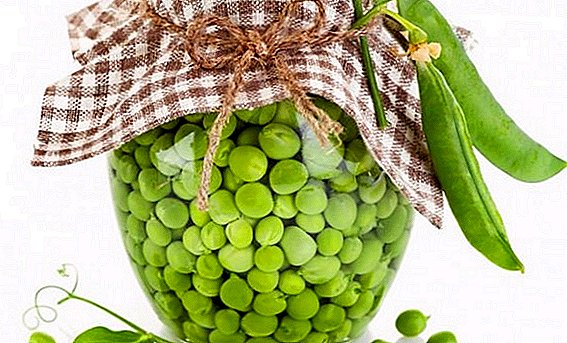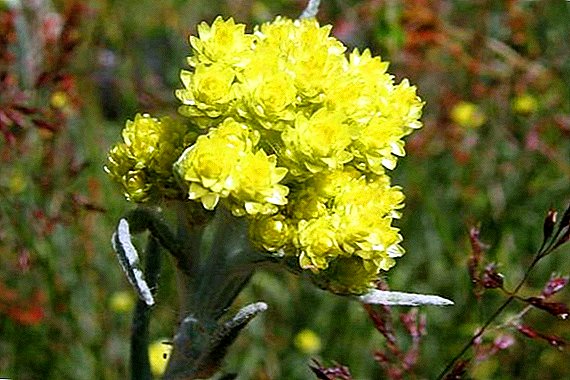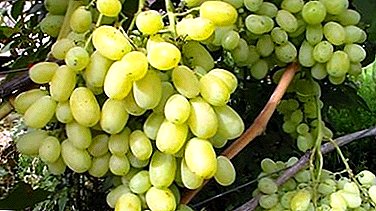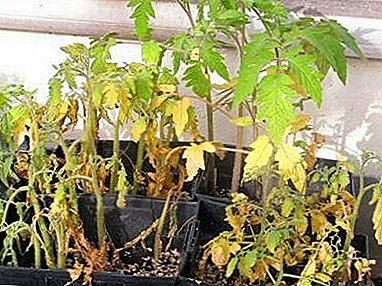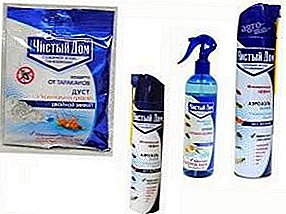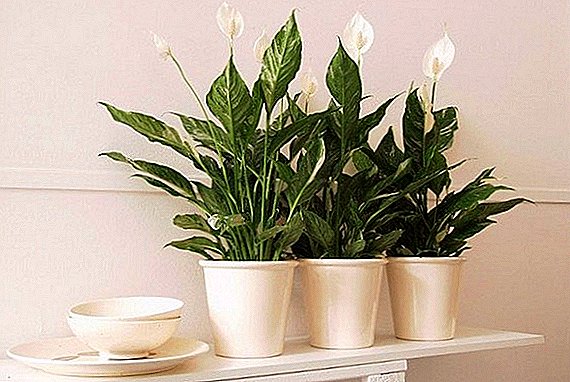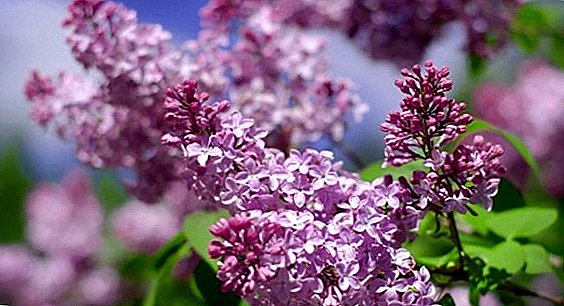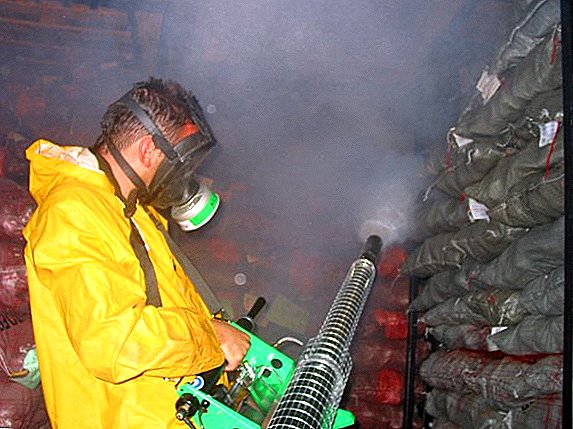
Laurel - relict plant, which was formed in the Tertiary period - and it, apparently, much older than humanity.
The legends surrounding this tree-bush, to match its antiquity: this is the material for crowning the winners and other prominent personalities (hence the word "laureate"), this and "fuse" from the wrath of Zeus - lightning strike, and the eternal companion patron of all the arts of Apollo.
Antique beliefs are woven into these legends not by chance, because the laurel in nature is distributed just in the territories of the great civilizations of antiquity - in the Mediterranean. It grows in the Krasnodar Territory.
However, laurel - unpretentious plant uncomplicated room culture, as well as the content of the garden area - in those areas where the average winter temperature varies around zero.
How to grow a laurel tree, plant reproduction, home care for laurel, diseases and photos - all this and not only read in our article.
Care at home and in the garden
Caring for the care of a laurel tree in the home and in the open field it is necessary to observe some points. Consider them in more detail.
Lighting
Laurel - the plant is quite hardy; it can grow with moderate light, but best of all it will develop - and, moreover, it will actively branch - in bright, mostly diffused, light. It should be protected from excess solar radiation.
Temperature
 Before growing laurel at home, you need to know that the best summer temperature interval is from 18 to 20 degrees and winter - from 10 to 15 degrees.
Before growing laurel at home, you need to know that the best summer temperature interval is from 18 to 20 degrees and winter - from 10 to 15 degrees.
The lavra lives most pleasantly in the open air - on the balcony, in the courtyard or in the country, including during the whole year - if the winter temperatures stay at + 5-6.
ATTENTION: zero temperatures for it is already a risk zone, and lowering the temperature to -10–12 ° C the laurel can withstand only a short time.
Priming
To grow laurel at home and in the open field, you need to prepare a soil mixture - this is ordinary garden soil, universal soil from a store or a loose nutrient mixture with a neutral reaction, self-cooked using one of the following recipes:
- one part of the sheet, the same amount of sod land and humus with the addition of two parts of river sand;
- two parts of sod land and one each - leaf earth, humus, peat and sand with the addition of wood ash in a small amount.
Watering
The plant should be watered abundantly in spring and summer.
IMPORTANT! At the same time it is impossible to allow stagnation of moisture in the soil: the water flowing after watering into the pan should be immediately drained.
Irrigation water taken soft, not cold - well-settled plumbing or rainwater.
With a cool wintering, which will bring great benefit, the watering should be moderate - about once a week or less so as to prevent the soil from drying out. If the wintering is warm, water more often and must regularly humidify the air.
Air humidity
 IMPORTANT: air humidity in winter should be sufficient, and in summer - increased. This is a necessary condition for the successful cultivation of laurel.
IMPORTANT: air humidity in winter should be sufficient, and in summer - increased. This is a necessary condition for the successful cultivation of laurel.
When caring for the laurel room should carry out regular spraying with soft water. You can also put the plant in a pallet with wet pebbles, located near the wide vessels with water.
ATTENTION: however, the air must be fresh enough. At home, the laurel tree should be in a well-ventilated place.
Top dressing
In the spring-summer period of active growing season twice a week. the plant is supported by complex fertilizers, alternating with mineral and organic compounds.
In autumn and winter, the frequency of dressings decreases to monthly or even more rare. It depends on the thermal regime, which contains the laurel: with a cold winter you will need to fertilize much less frequently.
Growth and bloom
In room culture, the plant lives about 15 years, in the area, in the same place - up to 60 years. Bush able to grow to 10-15 meters in height. Laurel at home is limited to 1.5-2 meters by trimming.
Small yellow flowers bloom in early spring, in March-April, and on some plants only staminate, on others only pistillate. When growing bloom in the room - a rarity. After pollination fruits ripen - blue berries.
Pruning
 When caring for a laurel tree at home - bush responds well to pruning, forming a magnificent crown: spherical, cubic, pyramidal.
When caring for a laurel tree at home - bush responds well to pruning, forming a magnificent crown: spherical, cubic, pyramidal.
Laurel pruning is carried out starting from 5 years of age.
There are two terms for this operation: end of summer (August) immediately upon completion of the active growing season and end of autumn (October-November), in transition to a state of rest.
In the open area, damaged branches are pruned in early spring.
Landing
How to grow laurel at home? Answering this question, it is important to remember that when planting laurel at home, a container with an obligatory drainage hole should have standard dimensions and an optimal ratio with the growth of seedlings: the size of the pot vertically ranges from a quarter to a third of the height of the plant.
Before planting the laurel, a drainage layer is placed at the bottom of the container (expanded clay, small pebbles, brick battle).
Then pour a small amount of prepared soil on top of it - root system with saved, whenever possible earthy clod. Finish the soil mixture to the desired level, gently tamping it.
Transfer
Young, the first five years of life, plants are transplanted, as a rule, every year, adults - every 2-3 years, and then even less.
ATTENTION! The transfer method should be transshipment, in which the earthen room is maximally preserved, and the new pot is not much, 2-4 centimeters, larger than the old one in diameter.
Your attention indoor laurel and his photo:





You can also see the video on how to care for your laurel at home:
Breeding
The reproduction of laurel is possible with seeds, and also vegetatively with cuttings and layering.
Seeds at home
ATTENTION! When growing laurel from seed, there are two main difficulties: laurel seeds quickly enough, in 3-5 months, lose a significant percentage of germination and, due to the high content of oils, very slowly, until six months, germinate.
Therefore, the seed should be as fresh as possible, and in order to see the germinated seeds, be patient. Laurel is sown in January-February. To speed up germination the seeds are treated with a growth stimulator solution, and then planted to a depth of 1-1.5 cm in a moist soil light.
Cover with plastic film, contain at 18 degrees, regularly air and maintain the moisture content of the substrate.
IMPORTANT! They monitor the possible appearance of mold on the seeds, weekly monitoring their condition. In the case of white plaque, remove it and wash the seeds in a weak solution of potassium permanganate.
As soon as germination begins, the seed shell cracks and then they can be immediately seated in separate containers, placing in the ground at a depth of five centimeters, - but seedlings will need to wait about a month.
IMPORTANT: young laurel leaves should be protected from heat and excess sunlight.
In the open ground
The ripening of the fruits of laurel falls on October-November. After they are harvested, the seeds are released and dispersed in a constant area, at a depth of about 5 cm. Shoots usually appear from late spring to late summer at a temperature of + 20-22 ºС.
When planting laurel seeds, seedlings thinned to a distance of 5-8 cm between individual plants. Sometimes there are January shoots, which, for the most part, die.
Reproduction by cuttings
 The best time for harvesting and rooting of laurel cuttings in room culture is March-April or June-July;
The best time for harvesting and rooting of laurel cuttings in room culture is March-April or June-July;
ATTENTION: in the open area, grafting is carried out only in June-July.
Cuttings with three internodes each (usually their length is 6–8 cm) are cut from the middle and lower parts of the semi-woody shoots.
The bottom sheet is removed, the rest is shortened by half and sent prepared cuttings for rooting.
At 16-20 degrees, they are buried by 1-1.5 cm in moistened sand. Cover with plastic wrap, air, spray.
Rooted cuttings begin to grow, as a rule, in a month and, when they grow up to 2-3 cm, they are planted in separate containers.
Your attention to the video on the reproduction of laurel cuttings at home:
Reproduction by layering
Usually, laurel gives lateral processes with a more or less developed root system, which are carefully separated and seated. Injured places sprinkled with crushed charcoal.
Thus, when growing laurel You can focus on the following calendars of main works:
In the open ground
Spring
March-April - sanitary pruning: removal of damaged and frostbite branches. Rooting cuttings in a cold greenhouse.
Top dressing
Summer
The whole period is the germination of seeds sown in autumn. Regular feeding
June-July - reproduction by cuttings
August - Forming Trim
Autumn
October-November: pruning, harvesting of leafy raw materials, gathering fruits, sowing seeds
At home
Spring
March - sowing seeds.
March-April - reproduction by cuttings, separation of the lateral processes.
Top dressing
Summer
The whole period is the germination of seeds sown in February-April. Regular feeding.
June-July - reproduction by cuttings
August - Forming Trim
Autumn
October-November: pruning, harvesting of leafy raw materials. Rare feeding.
Winter
February - sowing seeds
Signs of trouble
Leaves turn yellow, curl and fall off - insufficient air humidity. Regular spraying should be established.
The outer side of the leaves is covered with brown spots - overmoistening of the soil, especially in combination with low temperature of air and / or irrigation water. Need to optimize watering.
Why do leaves turn black?
The leaves are covered with a spotted black bloom, which is easily erased from the surface of the leaf blade - soot fungus, settling where there is traces of insect pests: flaky or mealybugs. First of all, get rid of pests, then remove the plaque. In case of severe damage, remove affected leaves.
Diseases and pests
A healthy, well-groomed plant is practically not susceptible to diseases and invasions of pests. With improper home care on the monastery spider mite, scythe, mealybug can appear. This is especially likely with insufficient air humidity.
As a first measure, the affected areas are treated with soapy water, and the most reliable means of controlling insect pests are directional insecticides.
Beneficial features
 The aroma and pleasant bitterness inherent in the laurel, made its leaves an extremely popular spice that causes appetite and promotes digestion.
The aroma and pleasant bitterness inherent in the laurel, made its leaves an extremely popular spice that causes appetite and promotes digestion.
Essential bay oil has disinfectant and insecticidal properties.
As a preventive measure against painful processes in the intestines, inflammations of the upper respiratory tract, it is sufficient to simply grow laurel in a room and inhale its aroma.
To enhance the smell of the plant twice a week, you can pour aspirin solution (5g per liter of water) or glucose (1 ml per 1l of water). Prepare also healing broths and infusions of bay leaves.
Application
From the fruit extract fatty oil used in medical practice for the manufacture of balls and candles. In addition, it is a good antiseptic, It is also used for massage treatments. Laurel fruits are also used as a spice.
You have learned the difference between a laurel tree, caring for it in the open field and at home, how to grow laurel from seeds, and that having your own personal bush-tree completely covered with ready bay leaves, you can forever say goodbye to colds, breathing in all the year round air saturated with phytoncides tree winners.


